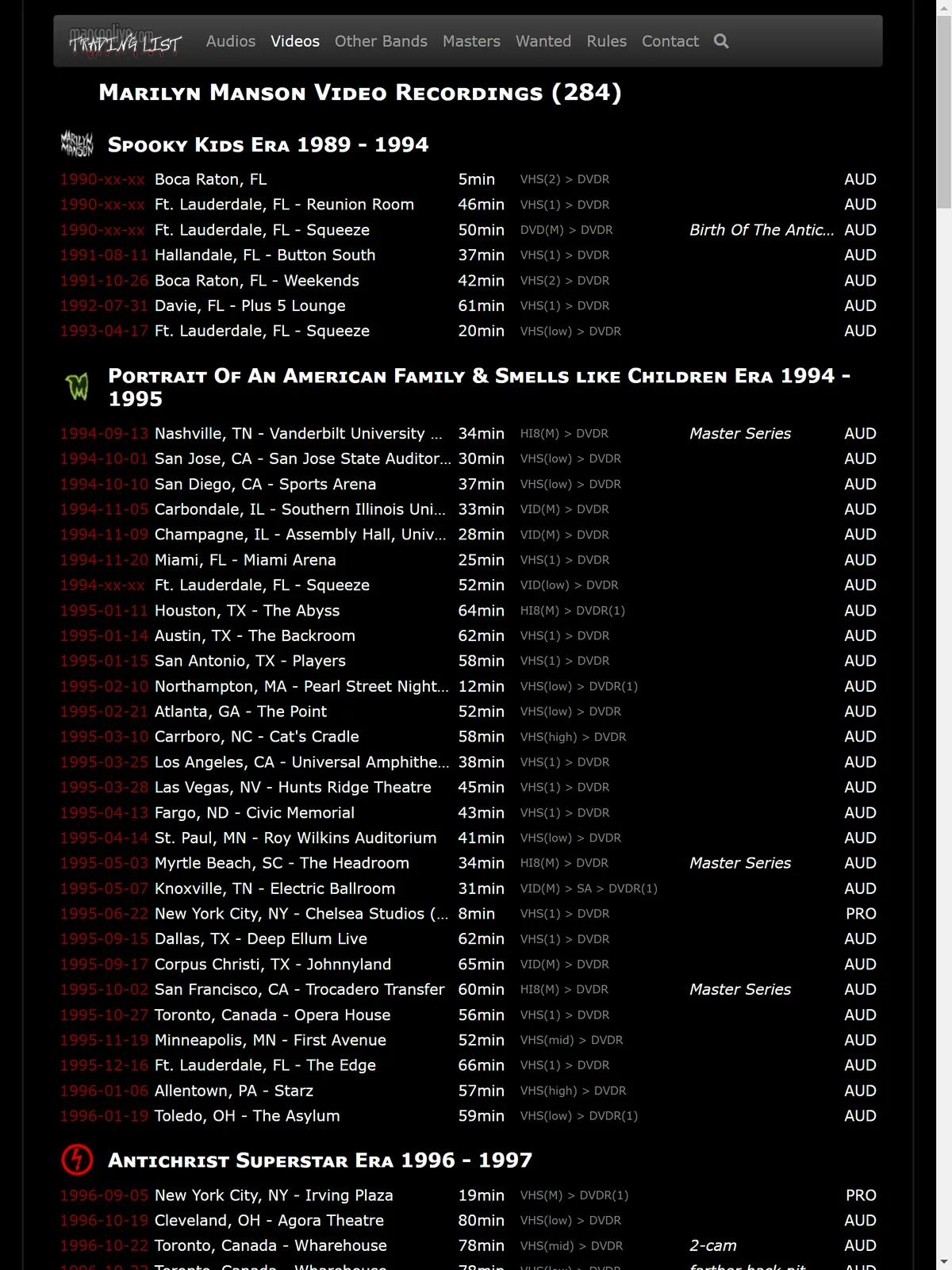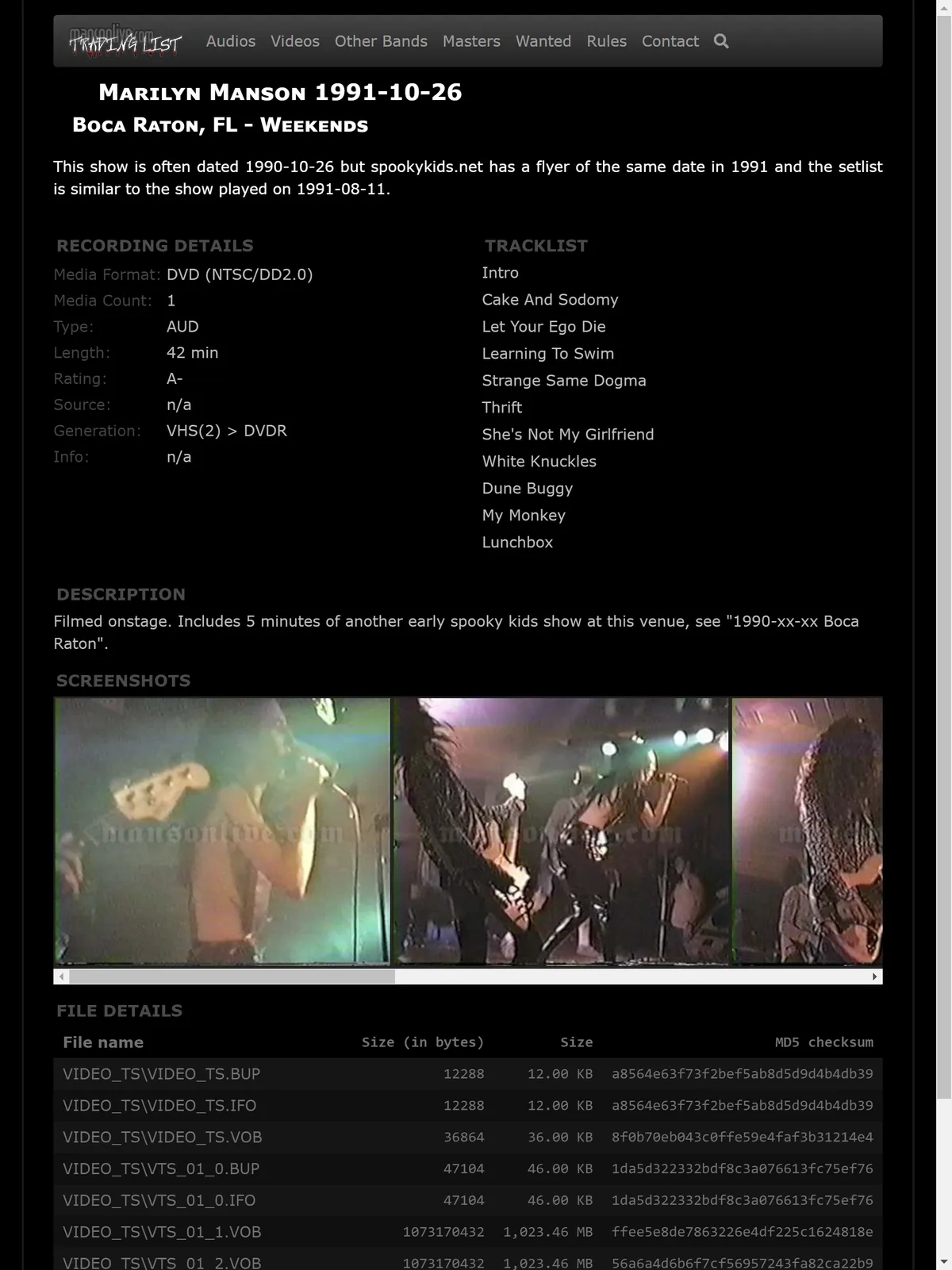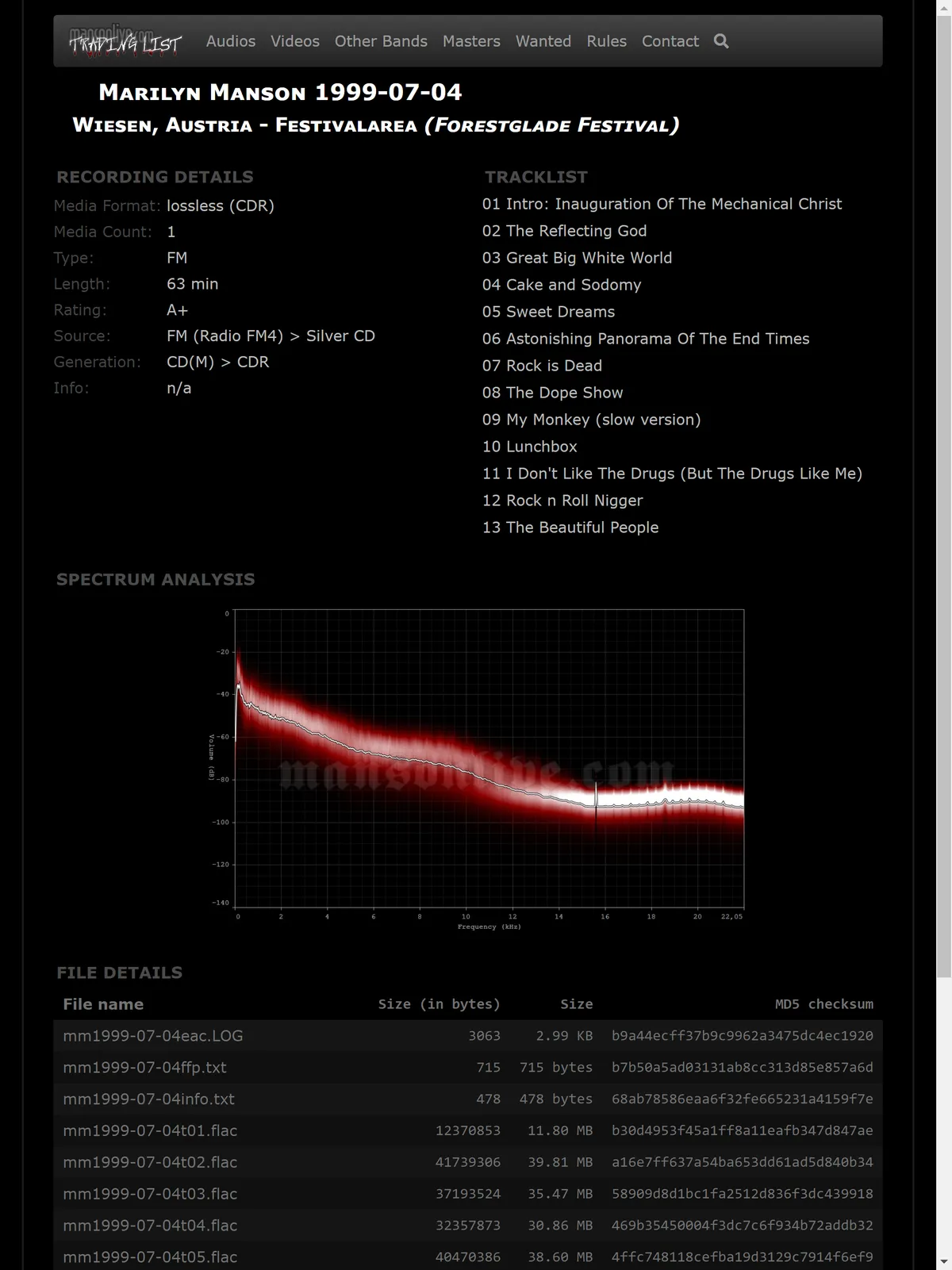Mansonlive.com is a website dedicated to my hobby of tape trading and collecting unofficial recordings of the band Marilyn Manson. The collection primarily consists of live concert recordings made by audience members or captured from radio/TV/online broadcasts, along with a few studio demos. I have always liked live albums due to the captured atmosphere and uniqueness of individual concert settings, and my interest in this hobby began in 2003 when I discovered recordings from concerts I had attended. Today, the collection includes more than 800 Marilyn Manson concert recordings (over 2000 including other bands), acquired through exchanges with people all over the world, both offline and online (after broadband internet became widely available). Launched in 2005, the website serves as a resource for other collectors to initiate trades, assists them in identifying and validating their copies from other sources, and acts as a documentation of existing recordings for the public. Therefore, I strive to publish extensive metadata about the recordings, including information on recording equipment, file formats, audio spectrums, and video frames.
-

Screenshot of the list of videos -

Screenshot of video details -

Screenshot of audio details
What is tape trading?
There is a detailed paper on the topic titled ”For and against the record industry: an introduction to bootleg collectors and tape traders,” published in 2003. While it lacks coverage of the transformation brought about by the widespread availability of high-speed internet, I recommend reading it if you have access (note that it is not free). There are Wikipedia articles on tape trading and bootleg recordings, which I find biased and not accurately reflecting the scene as I have come to know it. There are many other online resources on various aspects on tape trading, but I wasn’t able to find a recommendable introduction, so here is my attempt at a short explanation.
Introduction
Tape trading is a hobby of a small but internationally connected community of people who capture and distribute live recordings, mainly among themselves. It consists of people who produce recordings, known as tapers, and people who collect recordings, called traders or collectors. Tapers often double as collectors, but the number of collectors generally exceeds that of tapers. Trading refers to the ritual by which copies of recordings are privately exchanged for other recordings between tapers and collectors, following an (implicitly) agreed set of rules and conventions. Initially, recordings were exchanged on physical media via snail mail, starting with tapes (such as compact cassettes, DATs, VHS) - hence the name. Later, when I started, the exchange primarily occurred on CD-Rs and DVD-Rs. Nowadays, most exchanges are conducted online, either privately in one-on-one trades or on file-sharing networks, making them accessible to a wider audience.
Recording Types
The most common type of recordings are audience recordings. Tapers attend concerts as part of the general audience and bring audio and video recording equipment, usually intending to record the full concert. Since such recording is often prohibited by both the band (or its record label) and the venue, the equipment is typically sneaked in, necessitating stealth to avoid detection by security staff (stealthing or stealth recording). Only a few bands openly allow it. Due to the nature of these recordings, their quality is usually inferior to official releases, often significantly so. However, tapers strive to optimize the output using various tricks and techniques.
Another popular type of recording shared are broadcasts from radio, TV, or the internet. Additional types include captures from the mixing desk (soundboard), PA system, or in-ear monitors. Besides concerts, other traded content includes recordings of soundchecks or demo tracks from studio sessions. Occasionally, recordings enter the scene from external sources, such as individuals close to a band, crew, venue, or those who inadvertently record a concert without awareness of this community.
Exchange Rules
While many traders have their individual rules for exchanges (e.g., audio-to-video exchange ratios in private trades), there are a few universal principles. Private trades are based on mutual trust, with one party, usually the trade initiator, sending their copies first. Honesty is crucial, and traders who violate this principle risk being listed on public “bad traders” lists.
The distribution format of recordings is crucial; they must be as close to the original recordings as possible, and lossy compression or downsampling beyond what is required for the initial distribution is not accepted. For instance, audio recordings are typically traded and distributed in lossless formats; lossy formats like MP3 are unacceptable. Likewise, videos sourced from video-sharing platforms or social networks are not accepted. Traders who distribute inferior sources, intentionally or otherwise, are frowned upon. There are exceptions, such as when an audio recording was originally captured in MP3 format.
Lastly, all taping and trading must occur without financial transactions or interests. This differentiates these recordings (of independent origin, a.k.a. ROIOs) from bootlegs, which are illicit and often professionally produced for commercial exploitation. Despite the rules, there are those who disobey the rules, and there is a gray area between traders and bootleggers. Once a bootleg enters the market, it is circulated within the community for free.